Aluminium Sailing Yachts: Explorer Catamarans
Aluminium catamarans are a hot topic in the sailing world, and for good reason.
Their excellent properties make them increasingly popular for building durable, high-performance yachts. But what exactly makes aluminium special, and why are catamarans crafted from this material worth considering?
Watch our YouTube video covering the Pros and Cons of aluminium, with a selection of the best yachts available on the market today.
In this article, we’ll dive into the world of aluminium, examining this material’s strengths and challenges, comparing it to other materials, and highlighting some of the most notable examples—including both monohulls and catamarans.
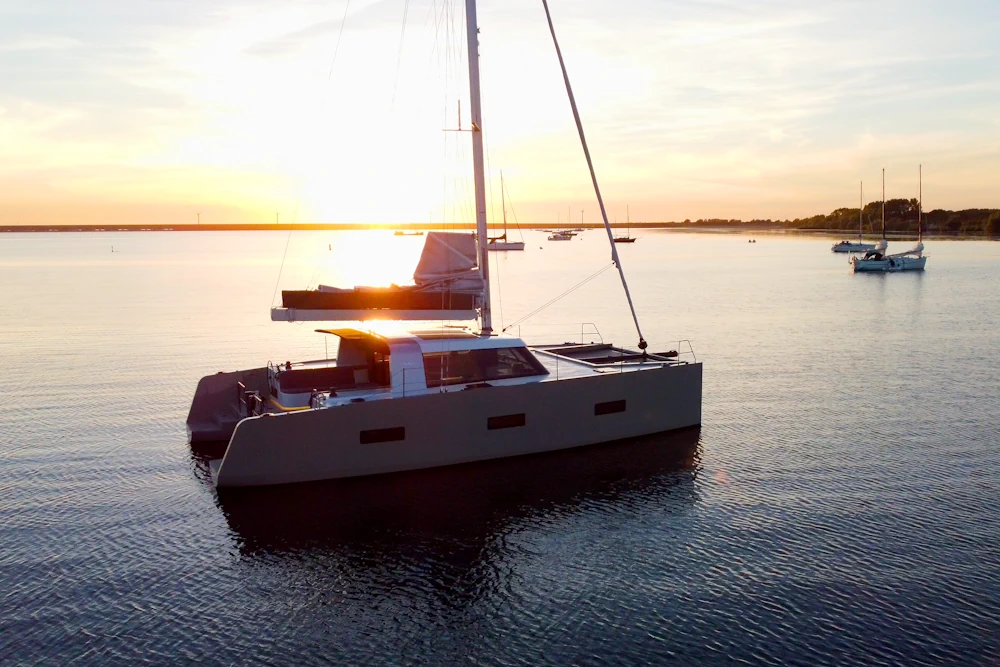
Vaan R4
Why Aluminium? The Material’s Unique Properties
Aluminium is lightweight, strong, and resistant to corrosion when properly treated. These properties make it a great choice for marine environments where durability and efficiency are crucial. Unlike other materials, aluminium can withstand impacts without catastrophic failure, an essential safety feature for adventurous sailors. It’s also recyclable, making it an eco-friendly option for those aiming for a more sustainable approach.
But aluminium is not without its challenges. While it resists corrosion, galvanic corrosion can occur when dissimilar metals come into contact. Proper maintenance, including regular inspections and ensuring coatings remain intact, is key to preserving its longevity.
Pros and Cons of Aluminium Boats
Comparing Aluminium to Other Boatbuilding Materials
GRP (Fiberglass):
Fiberglass is lightweight and low-maintenance, but it lacks the impact resistance of aluminium. Cracks can occur under stress, which is less forgiving in rough conditions. However, generally it is a less expensive material and easier to maintain.
Steel:
Steel is strong but significantly heavier than aluminium, which affects speed and fuel efficiency. It’s also prone to rust and requires diligent maintenance.
Wood:
Wood is classic and beautiful, but it demands high maintenance and isn’t as durable over time compared to modern materials.
Concrete:
Concrete has been used in boatbuilding but is heavy and lacks the performance characteristics needed for efficient sailing.
Aluminium strikes an excellent balance of strength, weight, and durability, making it a top choice for long-distance sailors and adventurers.
Notable Aluminium Yachts
Let’s explore some iconic aluminium yachts that have set benchmarks in design and performance:
Allures 51.9
This cutting-edge monohull cruiser combines comfort with bluewater capability. The aluminium hull ensures durability for long-distance voyages, while the composite deck reduces weight and enhances sailing performance.
Bestevaer 56
Designed by Gerard Dijkstra, this custom-built yacht exemplifies robust aluminium craftsmanship. Its minimalist design, practical layout, and exceptional seaworthiness make it ideal for expedition sailing.
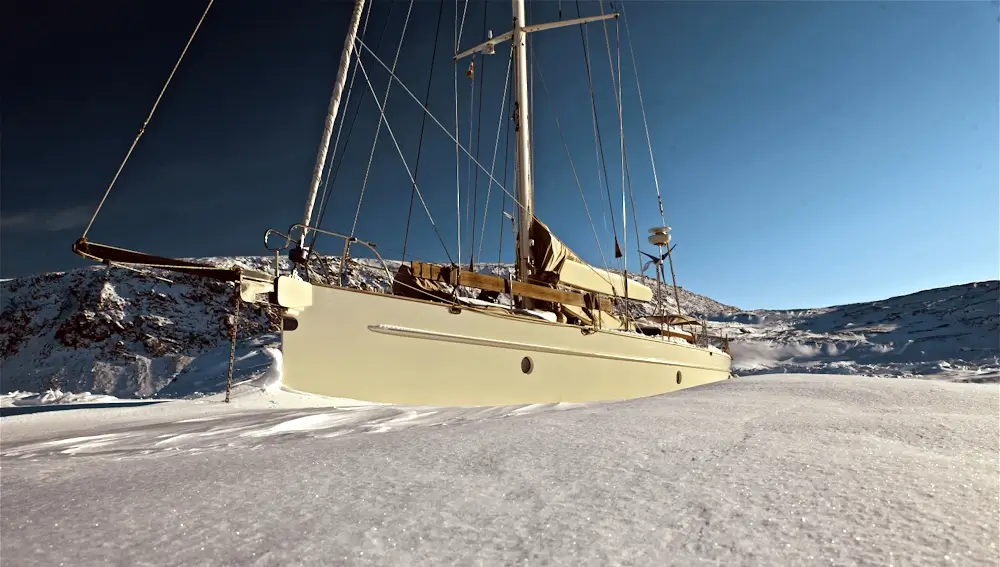
Ovni 43
Famous for its lifting keel, the Ovni 43 offers versatility for exploring shallow waters. Sailing legend Jimmy Cornell owned an Ovni, showcasing its pedigree for serious exploration.
Top Aluminium Catamarans
When it comes to catamarans, aluminium’s strength and light weight make it an ideal material for creating high-performance multihulls. Here are some top picks:
Garcia Explocat 52
Built for adventure, the Garcia Explocat 52 is rugged and reliable, perfect for bluewater cruising. Its insulated aluminium hull is ideal for extreme climates.
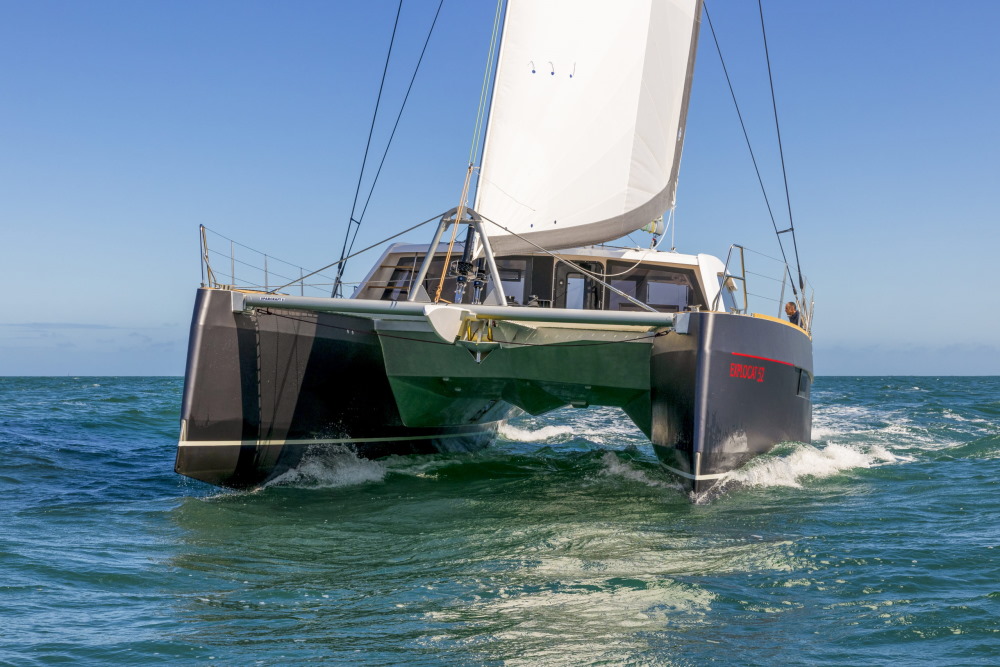
Vaan R4 & R5
These stylish, sustainable Dutch yachts are crafted from recycled aluminium, making them eco-friendly. The Vaan R5 offers luxurious living spaces while prioritizing energy efficiency.
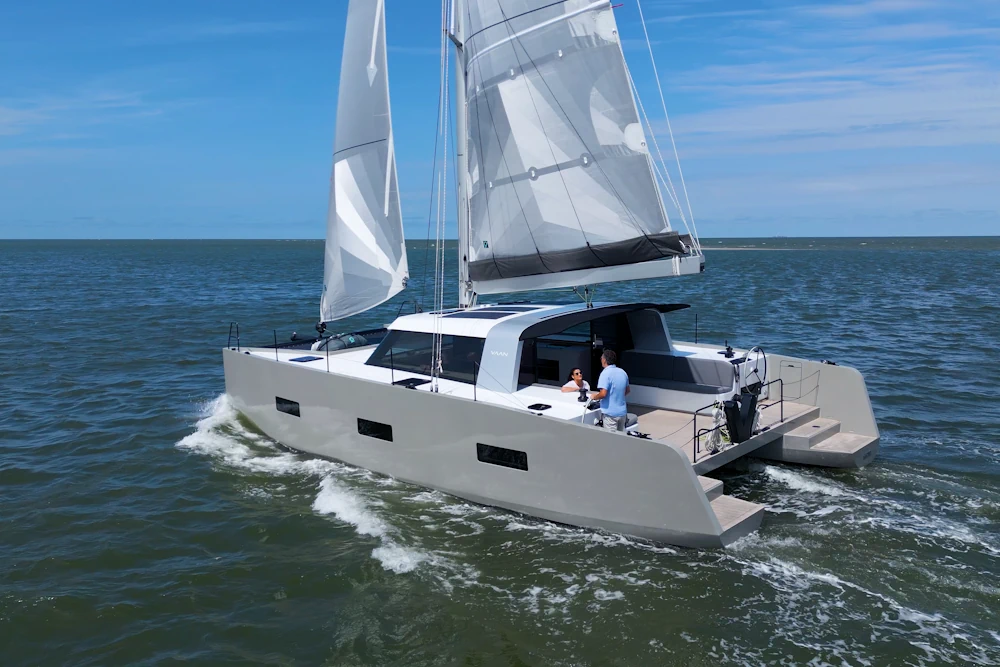
Portofino Cat 70 Villa
A luxurious, spacious catamaran that combines performance with comfort. Its aluminium hull ensures strength and safety, ideal for those seeking high-end cruising.
Slyder 55
This performance-driven design doesn’t compromise on comfort. Lightweight construction enhances agility and speed.
Mumby 48
A practical, well-tested choice for bluewater sailors, the Mumby 48 balances efficiency and durability. Its construction allows for excellent sailing performance and fuel economy.
Odisea 48
With innovative design and a focus on sustainability, the Odisea 48 pairs an aluminium hull with modern sailing technology for a reduced environmental impact.
Eyecat 55
Known for its striking design, the Eyecat 55 is built to handle challenging conditions while providing luxurious comfort.
Nahoa 55
A customizable catamaran that balances luxury and durability, this is a project driven by YouTubers Sailing Nanoa. Ideal for sailors who want a yacht tailored to their needs.
Stradbroke 52, 63
A versatile multihull designed for both speed and comfort. Its lightweight construction ensures strong performance.
Delos 53
Built by Stradbroke, this model is being built by YouTubers SV Delos.
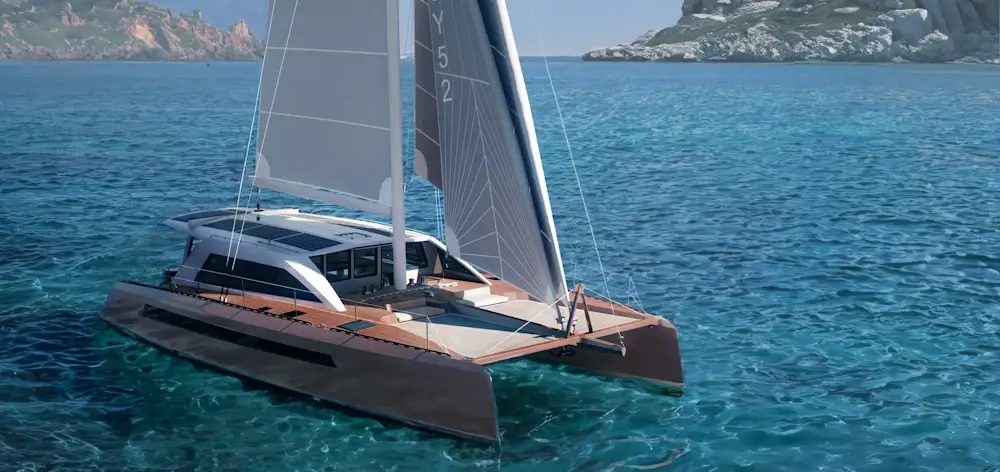
Freedom 52
Perfect for liveaboard sailors, the Freedom 52 combines spacious accommodations with exceptional strength for extended cruising.
Why Choose Aluminium?
Aluminium catamarans are an excellent choice for sailors who value strength, safety, and long-term durability. While they come with a higher initial investment and require careful maintenance, their advantages—including resilience, eco-friendliness, and performance—make them a standout choice for exploring the world’s oceans.
Aluminium yachts continue to push boundaries in performance and sustainability. Whether you’re drawn to rugged monohulls like the Bestevaer 56 or the adventurous versatility of catamarans like the Garcia Explocat 52, there’s no doubt that aluminium is a material that delivers.
Fair winds and Full Metal passages!
FAQs
Aluminium is highly valued in marine environments due to its lightweight nature, high strength-to-weight ratio, and excellent resistance to corrosion when treated correctly. Its durability and ability to withstand impacts make it ideal for both monohulls and catamarans, especially in demanding conditions.
Aluminium is naturally corrosion-resistant because it forms a protective oxide layer when exposed to air. However, in saltwater environments, aluminium is at risk of galvanic corrosion if it comes into contact with dissimilar metals. Proper surface treatments, like anodizing or applying marine-grade paints, can significantly reduce this risk.
Galvanic corrosion occurs when two dissimilar metals are in electrical contact in the presence of an electrolyte, such as saltwater. This can cause the less noble metal (in this case, aluminium) to corrode more rapidly. To prevent galvanic corrosion, marine-grade aluminium is often paired with sacrificial anodes (such as zinc or magnesium) and insulated from other metals using proper fittings.
Aluminium boasts an excellent strength-to-weight ratio, making it stronger than fiberglass and lighter than steel. This balance allows for increased speed and efficiency without compromising structural integrity. Aluminium’s ability to absorb impacts also makes it safer in collision scenarios.
Regular maintenance is essential to ensure the longevity of aluminium boats. Key steps include:
– Inspecting and maintaining paint or anodized coatings.
– Replacing sacrificial anodes as needed.
– Avoiding direct contact between aluminium and other metals to minimize galvanic corrosion risks.
– Keeping the hull clean to prevent marine growth that can compromise coatings.
Yes, aluminium can experience pitting, a localized form of corrosion that occurs in the presence of chlorides (like those found in saltwater). Proper maintenance, including the use of protective coatings and regular washing with fresh water, can prevent pitting and extend the life of the hull.
Yes, aluminium hulls require careful electrical system design to prevent stray current corrosion, which occurs when electrical currents from onboard systems or marina shore power leak into the water and attack the hull. Proper grounding and insulation of electrical systems are critical to avoid these issues.
Aluminium is highly sustainable due to its recyclability. Boats made from aluminium can often be recycled at the end of their lifespan, reducing the environmental impact compared to materials like fiberglass.
With proper care and maintenance, an aluminium boat will last multiple decades. The material’s natural resistance to corrosion, combined with diligent upkeep, ensures longevity even in harsh marine environments.
